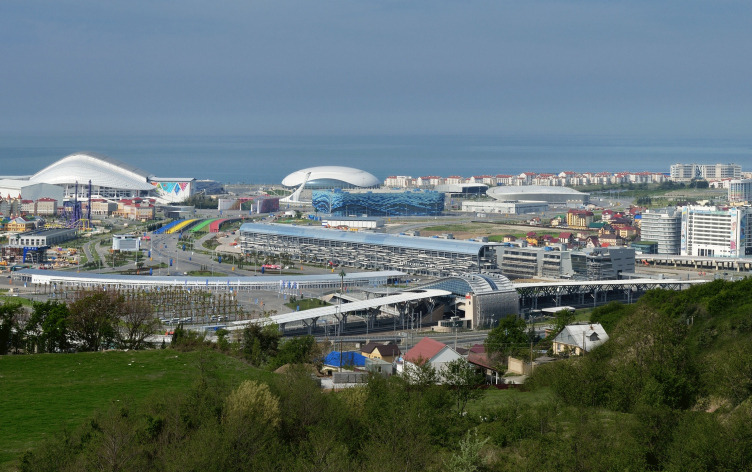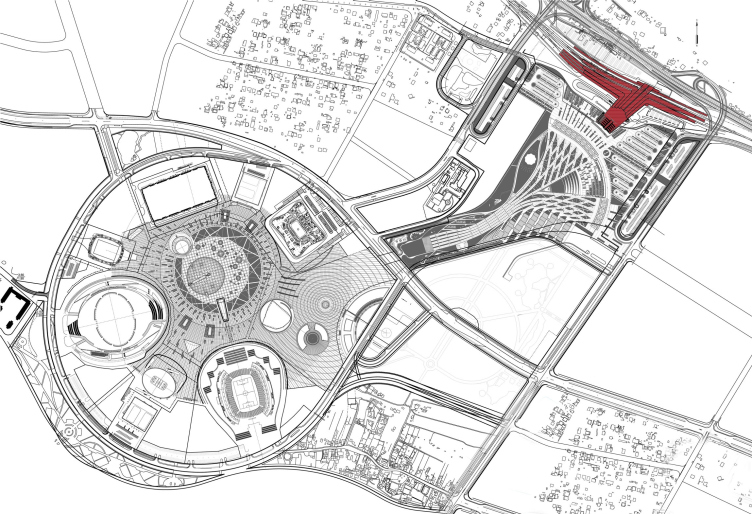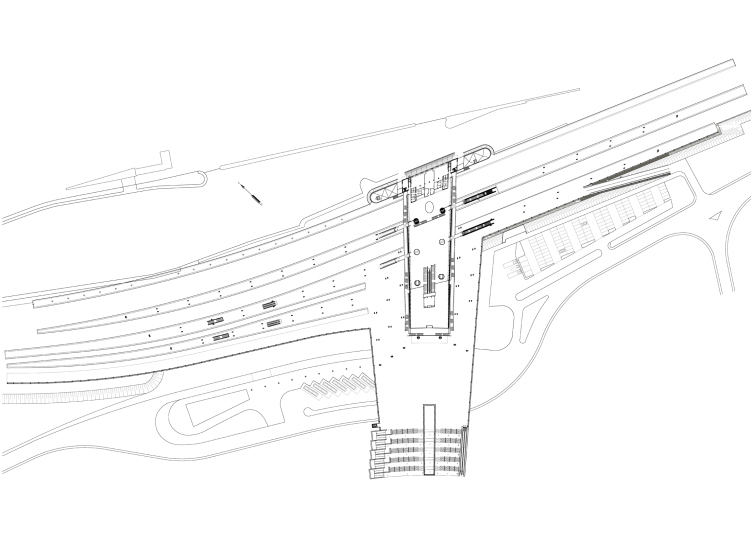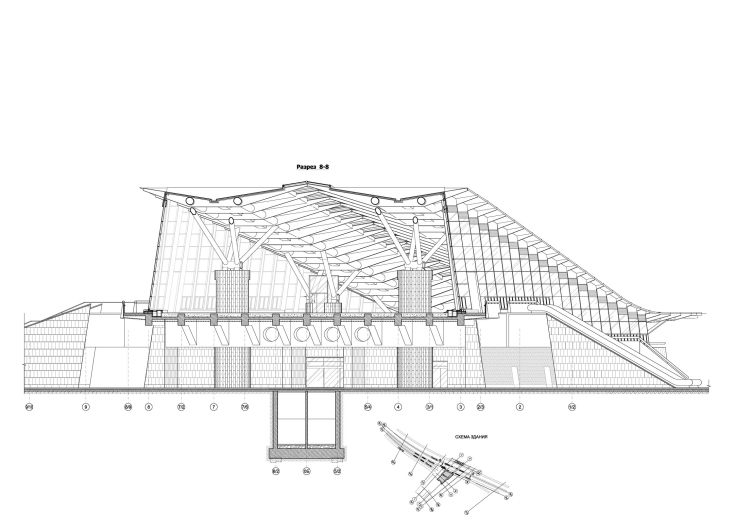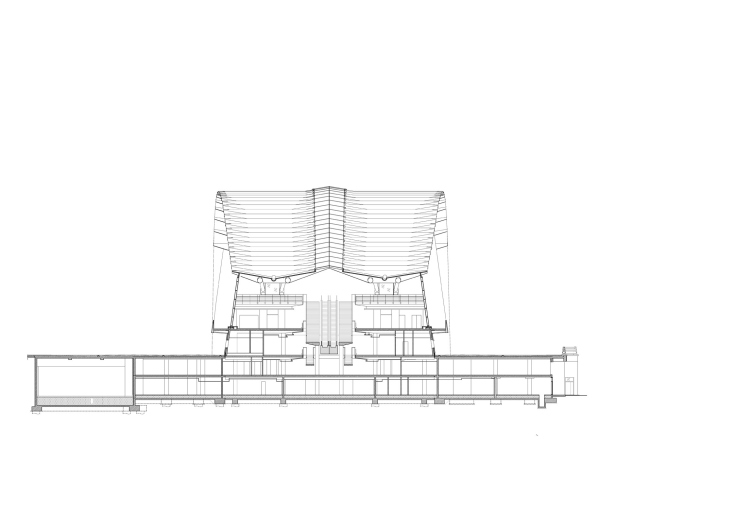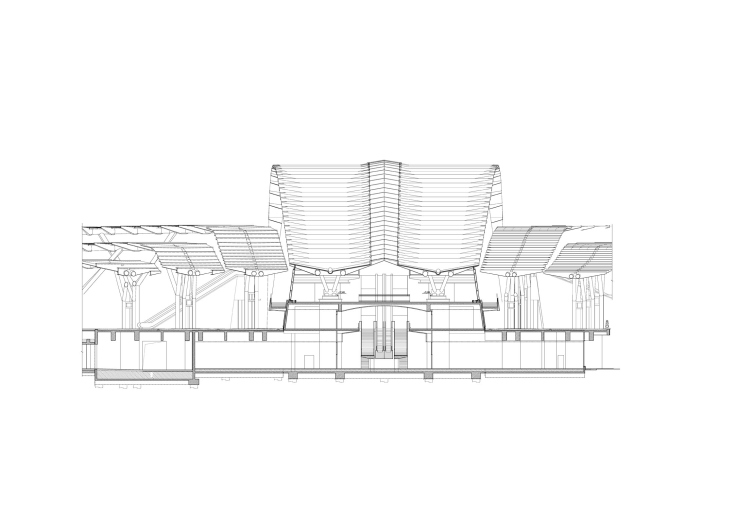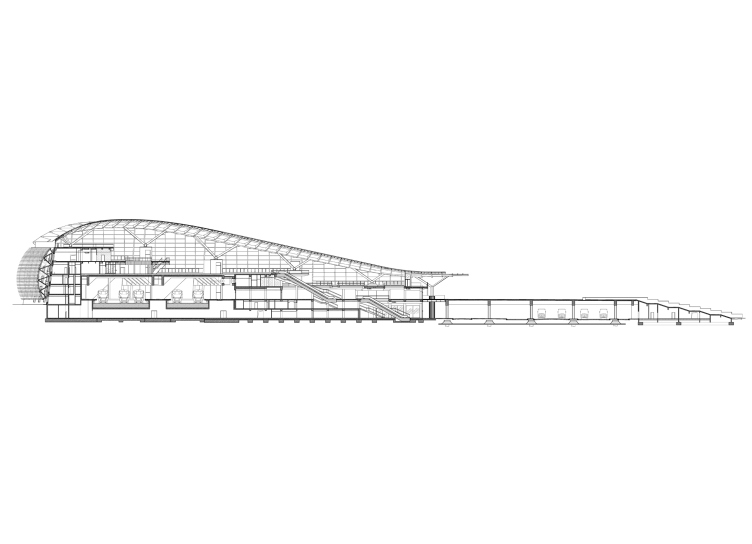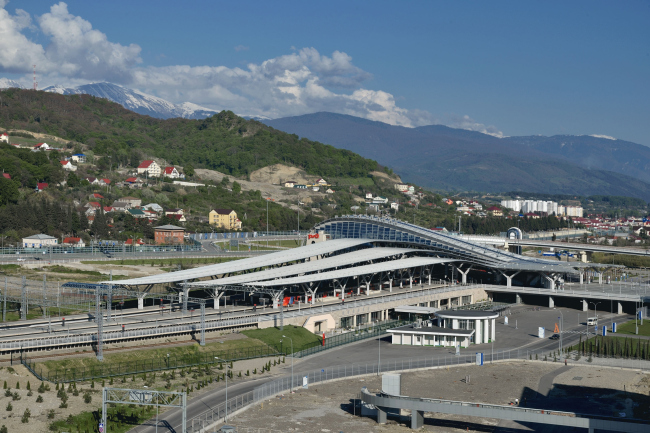
"Olympic Park" Terminal © Aleksey Naroditsky
For the team of Nikita Yavein this project became a huge professional challenge. And it was not so much about the status of the object (the architects were to create, no more no less, the "gate" of the Olympics), as in the time frames that the object was to be completed in. "Studio 44" got the commission for the project of the railway terminal in March of 2010, i.e. a little less than four years before the Olympics: before that, the project was done by a different team but the customer started having problems with it, both from the technological and the architectural standpoint. "Strictly speaking, in Russia the architects with an experience of designing railroad terminals are rather hard to find. "Studio 44" had such an experience - first of all, we built the Ladozhsky terminal in Saint Petersburg, and, second of all, by that time we had already won the international contest for building the main railroad terminal in Astana, and the work on it was in full swing - Nikita Yavein shares - furthermore, the Ladozhsky terminal was designed in a record-breaking term, a little over a year, and I think that to a large extent it was this particular project that brought us such a prestigious and complex order as the Olympic Terminal. A mere month and a half after the first meeting with the customer we already signed the official contract, and we started designing even earlier than that: strictly speaking, in the end of April the schematic design of the complex was approved by the architectural board of "Olimpstroy".

"Olympic Park" Terminal © Aleksey Naroditsky
It is clear that under such circumstances the architects were devoid of the possibility to start their project "from scratch". For one, before "Studio 44" coming into the project, it already included the passenger platforms and the track facilities. Besides, the architects were supposed to tie in the location of the building with the layout of the entrance area of the Olympic Park. At the same time, both the track facilities and the layout of the park had a curvilinear geometry, so the "curved" plan of the terminal was in fact predestined: born at the junction of two curvilinear geometries, it acted as the perfect matchmaker between them.
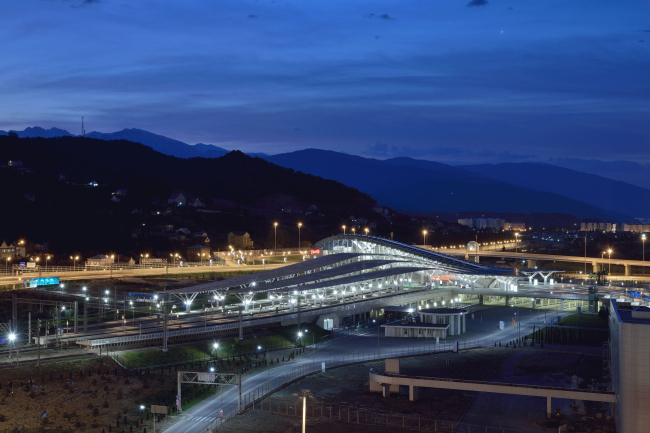
"Olympic Park" Terminal © Aleksey Naroditsky
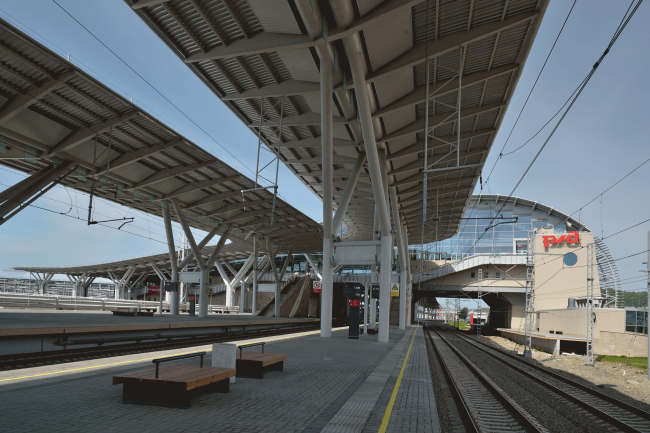
"Olympic Park" Terminal © Aleksey Naroditsky
This plan is perfectly complemented with the non-linear "flowing" architecture of the building. Like two waves running abreast one another, the awnings over the passenger platforms billow over the central volume, and then, abruptly changing their direction, cascade down in the marquee that covers the terminal's square from the sun. "The terminal is both the beginning and the end of the whole planning system of the Olympic Park, very much like its fountainhead and its estuary. Because it is from here that the route to the main Olympic Square starts - Nikita Yavein explains - we wanted our architecture to set the tone to this whole momentum, and to adequately convey its dynamics. Hence - the constant flowing of the form and the "hydraulic" plastic of the shell of this edifice". Such plastic is resonant with the character of the surrounding landscape: the building of the terminal is located at the very edge of the Imeritinskaya lowland, to the north of which the relief ascends to the mountains in ledges and terraces.
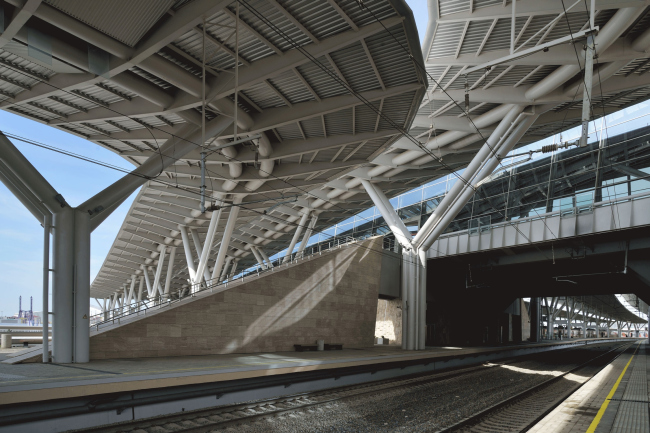
"Olympic Park" Terminal © Aleksey Naroditsky
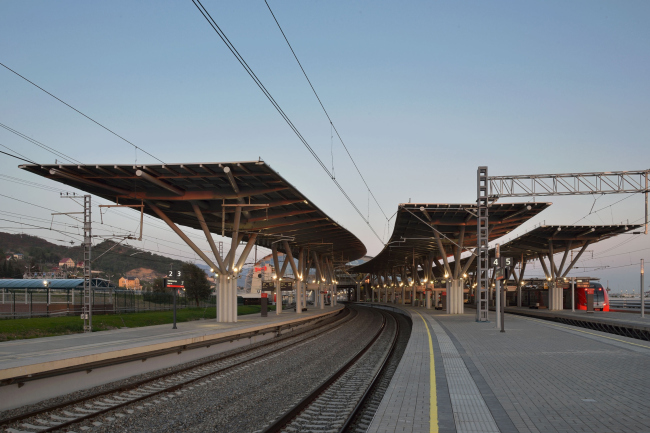
"Olympic Park" Terminal © Aleksey Naroditsky
Of course, the architectural and planning solution of the terminal was influenced by its very function: a modern terminal, "Olympic Gate" or not, besides looking beautiful, also needs to be really easy to navigate. In order to optimize the organization of traffic, luggage, and passenger flows, the architects made a two-level square in front of the terminal. The top level - a platform situated at a height of 6.3 meters - is wholly given to the pedestrians and is treated as the public territory, from where the grand staircase leads down to the Olympic Park. Down below, there are driveways leading to the railway station and the places for boarding/alighting of the passengers of the public transportation and personal vehicles, parking lots for the personnel vehicles, and the bus depot.
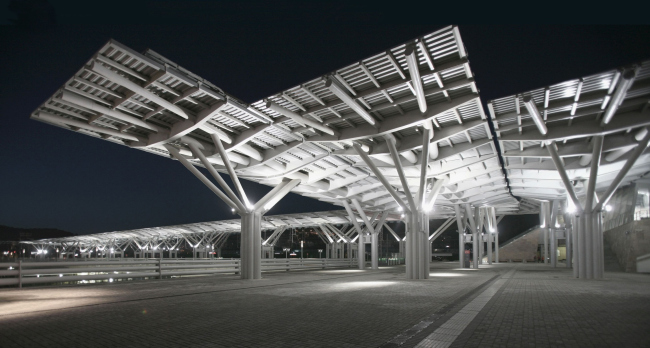
"Olympic Park"Terminal © Aleksey Naroditsky
The inside organization of the terminal is also of a multilevel nature. The infrastructure of the passenger service for the short-distance destinations is mainly situated under the platform, while the long-distance terminal is situated above the tracks, in the form of a в виде конкорса. Still higher, at the point of +18,620 meters, there is a waiting lounge, a hall for the official delegations, a bank, a service center, a VIP lounge and the maintenance facilities. All the levels are interconnected and are also connected to the passenger platforms with stairways, ramps, moving stairs, and elevators.
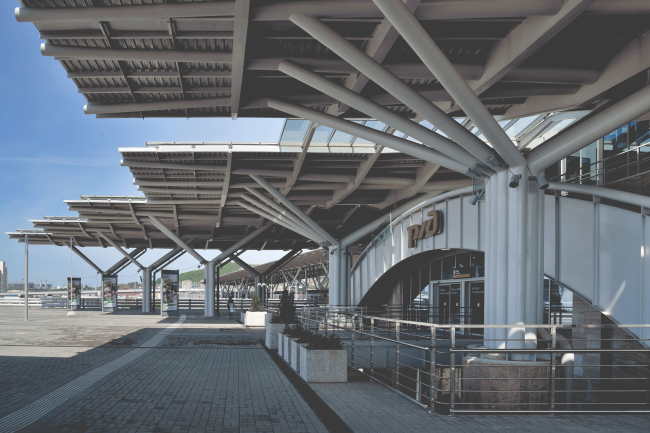
"Olympic Park" Terminal © Aleksey Naroditsky
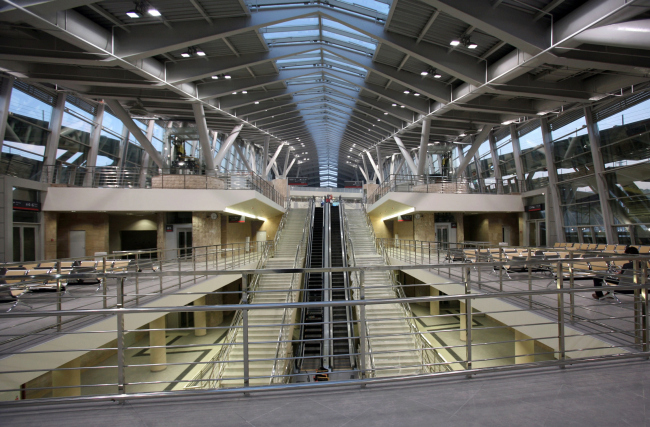
"Olympic Park" Terminal © Aleksey Naroditsky
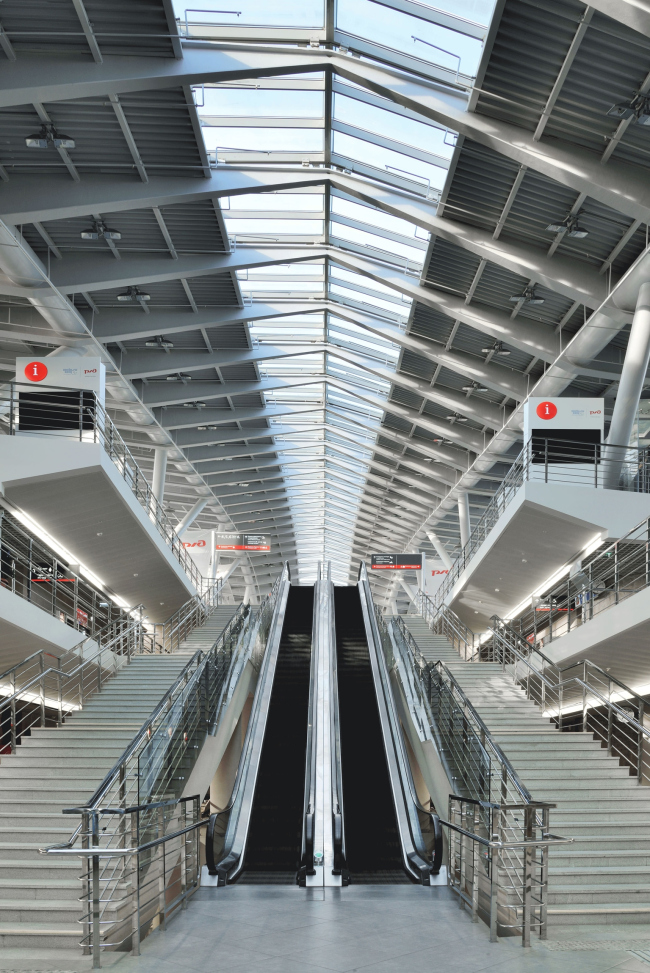
"Olympic Park" Terminal © Aleksey Naroditsky
The complex multi-branch system of vertical communications forms the "face" of the inside space of the terminal, also serving to express the idea of constant movement and locomotion, in its own way. It is also manifested in the bare structure of the roof supported by multicolored pillars: the architects deliberately decided not to hide it with the false ceiling but simply covered it with fireproof paint of a steel hue that perfectly matches the natural stone that was used fir covering the walls and the elevator chutes. As for the stone itself, "Studio 44" made its choice in favor of the Italian travertine that looks very much like the local limestone that was extensively used in the buildings of Sochi during the 1950's. "This is both tribute to the local building tradition and at the same time a token of reverence to the natural surroundings, i.e. the mountains" - says Nikita Yavein. The travertine, by the way, is used both in the interior and in the exterior design - which enhances the integrity of the architectural image: it is only the texture of the stone (jagged or sawn) that varies.
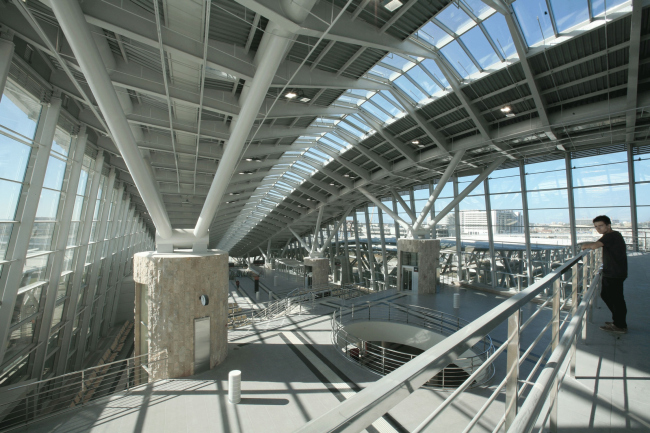
"Olympic Park" Terminal © Aleksey Naroditsky
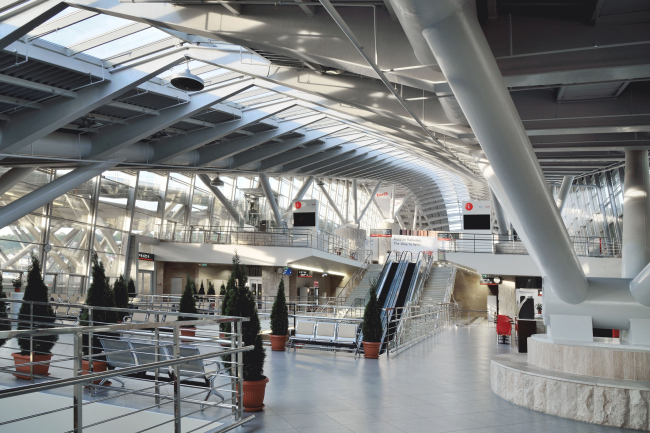
"Olympic Park" Terminal © Aleksey Naroditsky
A special mention should be given to the roof that forms the image of the entire complex. Transforming the striking-looking idea from paper to reality proved to be very challenging indeed: in fact, its every unit was designed individually. Each element of the metallic structures (these being over three hundred there in the roof coverage) was calculated on a special formula, was prepared individually and then was going through a controlled assembly with the "model-adjustment" procedure. The architects deliberately made their choice in favor of the hollow tubes: the circular sections facilitated the junction of the columns and the supporting struts, linking the struts to the roof and so on. The roof coverage is executed from galvanized lock-seam sheet metal. In order to bring into reality its curvilinear geometry, the architects had to make use of the parametric modeling software.
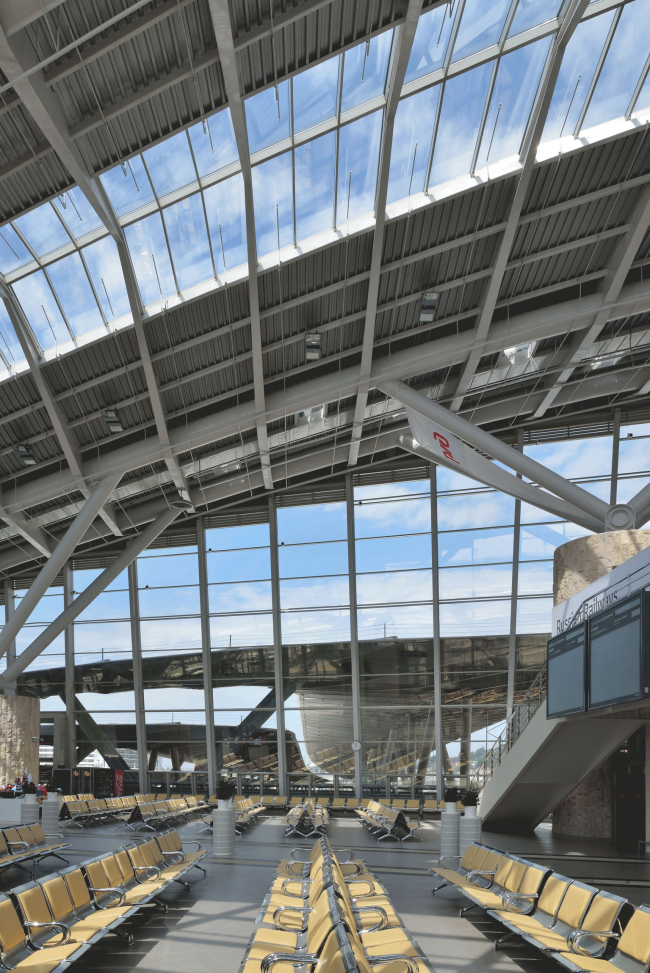
"Olympic Park" Terminal © Aleksey Naroditsky
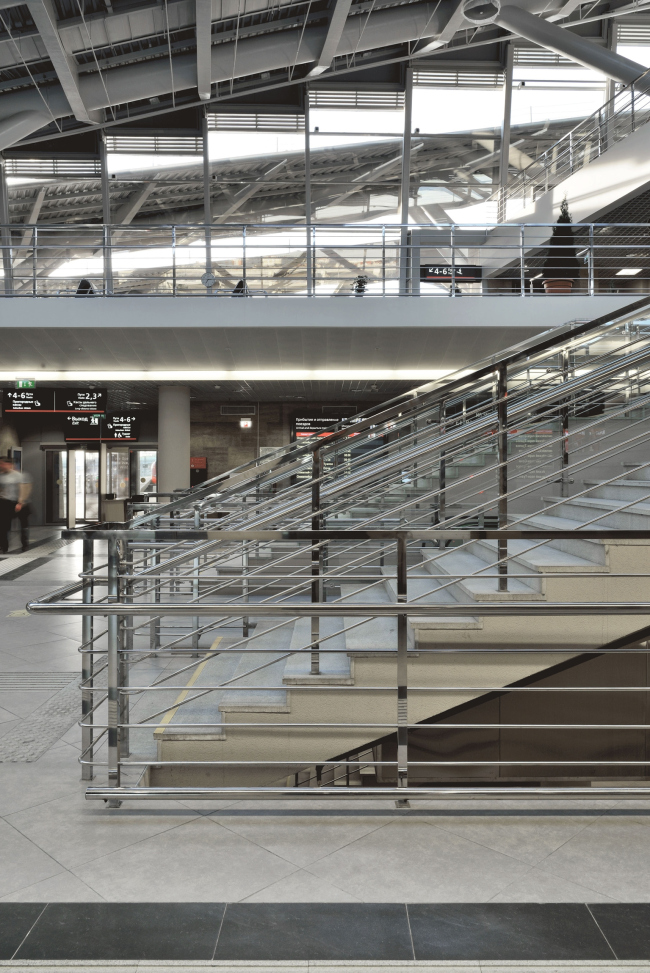
"Olympic Park" Terminal © Aleksey Naroditsky
For the terminal, just as for a number of other Olympic objects in Sochi, special ecological standards BREEAM Bespoke were developed, ones that took into consideration the specifics of Russia and the sport objects. By the moment it was done, though, "Studio 44" had already got the federal approval with its project, so in fact the architects had to go back to it introducing a whole number of changes related to energy and water conservation, the quality of the indoor air and the acoustic comfort, as well as creating the conditions for the usage of bicycles. The building of the terminal uses energy-saving windows, low-noise ventilation equipment, lights with energy-saving bulbs, automatically adjusted lighting systems and motion sensors. Special impulse and infrared sensors also control the water consumption, upon the roof there are solar batteries, all the ventilation machines are equipped with inside filters, while the system of purifying the outside air is a two-phase one. This giant work was not done in vain, though: it was "Olympic Park" that became Russia's first edifice that was certified in accordance with the international standard BREEAM. It was awarded the honorable rating VERY GOOD with a total number of points 63,3% - which, for today, is the absolute record for Russia.





